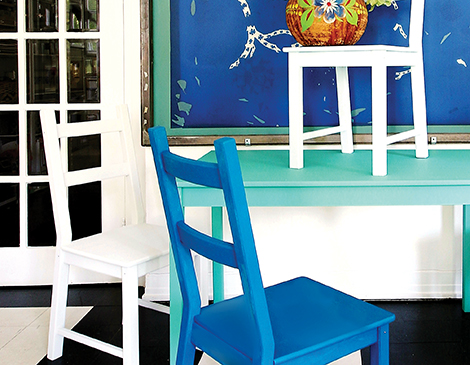Accent Wall
Think beyond traditional walls. Try painting the inside of a closet or adding a burst of color to the inside of an arched entryway. “Take a look at the finishes or carpeting or drapes,” says Sue Wadden, Sherwin-Williams’ director of color marketing. “That’s a really great way to make the right choice on color, so it looks connected to the room.”
Electrical Outlets
Outlets may be the last thing you’re thinking of decorating. However, taking a brush to this small part of the room can add a little zest very easily. The possibilities are endless: Maybe choose a color that matches the wall, or statement shade to draw your eye in. “You could use spray paint on them because you want something that sticks a little better,” Wadden says about metal outlet coverings. “For wood or plastic, you can hit it with a wall color and that would look great.”
Kitchen Island
Painting something central in the kitchen such as an island or countertop could pull the room together and make it look brand new. “There’s a hot trend in kitchens and baths where deep blues and greens are trending really big,” Wadden says. “Say you have some white cabinets and you love them, but you need a little pop, you can paint your island or an element in your kitchen a navy, and it’s immediately an update.”
LampShades
Adding a splash of paint to lampshades not only adds an interesting accent, but whatever color you add also plays with the light to give it a high-end effect. “Paint the outside of a lampshade and then spray-paint a gold or copper metallic on the inside,” says Wadden. “It’s beautiful. It just glows.” Depending on your vision, paint just a first coat and then pop the shade back on to see how it looks with the light on and off.
Vintage Furniture
A classic, previously loved piece is always an interesting touch, but there’s a way to give an old piece a modern twist. Find a color that makes the piece stand out, but also goes together with the rest of the room. “Give the chair an overall light sanding, just to get all the goobers off of there, and then get a really good primer so everything sticks to it,” says Wadden. “Then use just a really small brush, like an inch-and-a-half brush, to get into all those little grooves.”
Read More: Find inspiration for your next project with our 2020 Home Issue.




